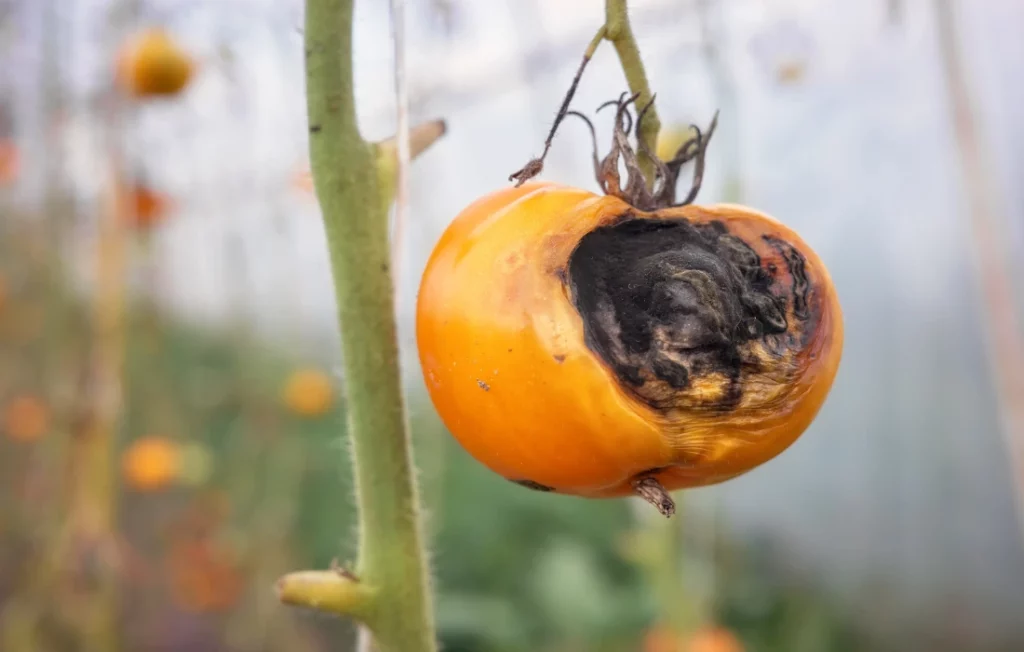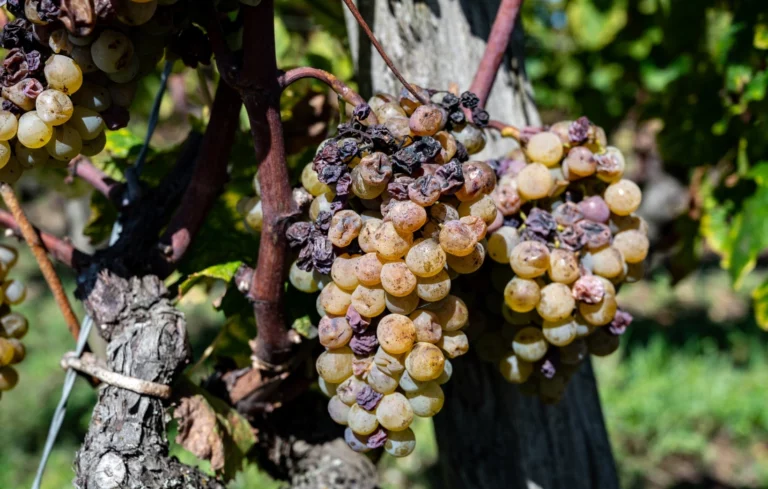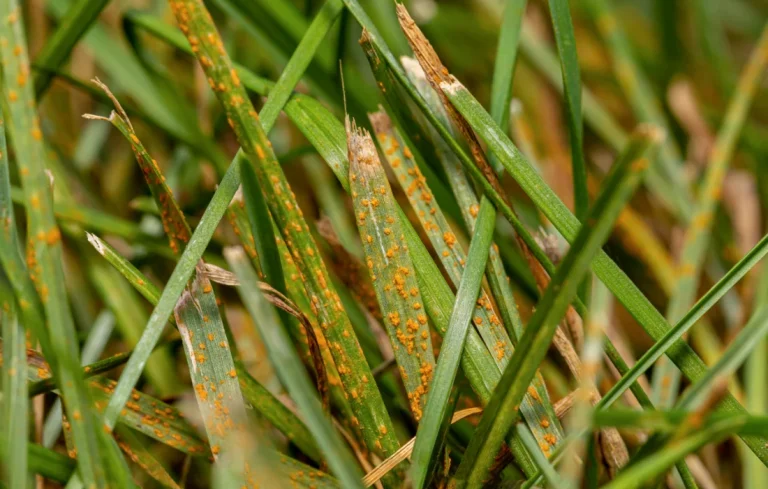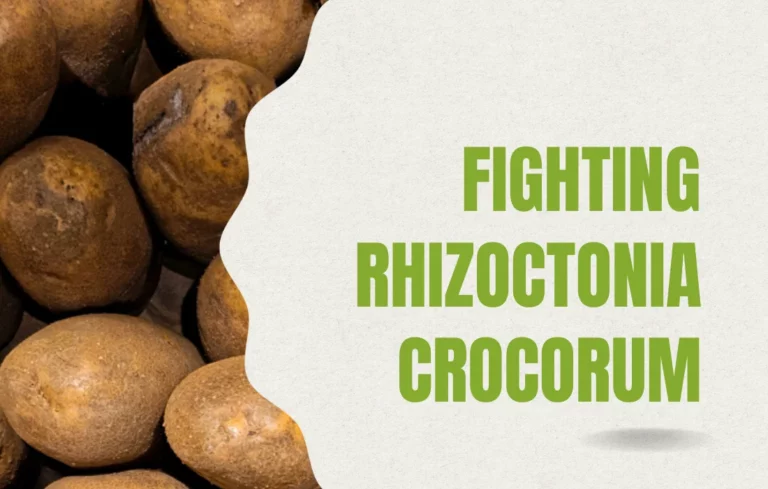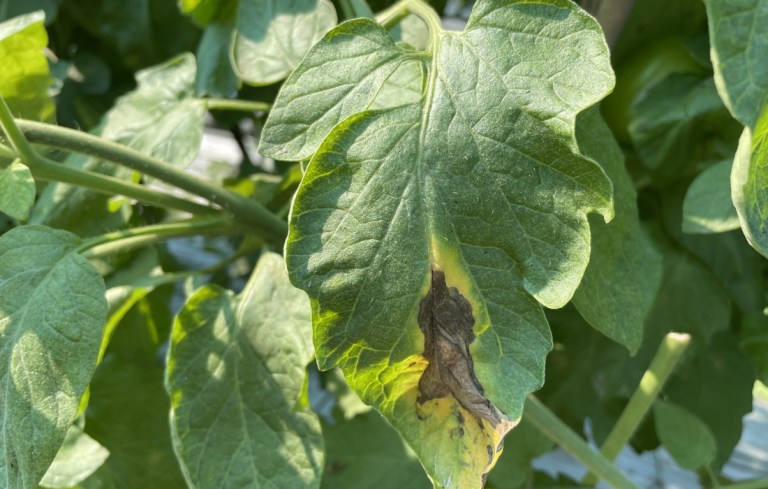Tomato powedery mildew is one of the most feared scourges of market gardeners and tomato producers. Fearsome for its rapid spread, this fungal disease is caused by fungi of the genus Phytophthora . Its appearance, often sudden, decimates entire crops in the space of a few days. Faced with this problem, Agrobiotop develops 100% natural treatments and solutions to protect your crops against this disease.
Identification and general characteristics
Tomato blight is a fungal disease that manifests itself mainly in two forms:
- aerial mildew , caused by Phytophthora infestans ,
- Ground mildew , caused by Phytophthora parasitica .
Tomatoes are not the only ones affected; this disease also affects other nightshades such as potatoes.
The risk period extends from April to October , with a peak of attacks in open fields from August. Tomato powedery mildew benefits from a humid and mild climate, between 10 and 25°C, to proliferate. Prolonged rain, persistent mist or morning dew are enough to trigger an epidemic in a few days. Once established, it is almost impossible to stop its development in a curative manner, which makes prevention essential.
The fungus survives in the soil as oospores during the winter. Under favorable conditions, it infects crops in spring, spreading in small pockets before rapidly expanding. Prolonged lack of moisture or temperatures above 30°C can interrupt its development cycle, but these conditions are rare during the growing season.
Need a natural solution for Tomato powedery mildew?
Mode of conservation and dissemination
The exact ways in which Tomato mildewpersists from one season to the next are not yet fully understood. However, it is known that the fungus can survive in several forms. It persists as mycelium on contaminated plant residues or as oospores in the soil . This ability to persist ensures that the disease can recur from one year to the next.
Wind , rain , and irrigation play a major role in spore dissemination. During a wet spell, sporangia are released and carried several kilometers. A healthy crop can thus be contaminated by spores from a distant field.
Other vectors contribute to dissemination:
- The use of already infected plants or seeds.
- Storing contaminated potato tubers in the same space as young tomato plants.
- The presence of wild solanaceae carrying the fungus near crops.
- Poor management of plant waste, favoring the persistence of the fungus from one year to the next.
What are the symptoms and damage of Tomato powedery mildew?
Aerial blight begins by affecting the foliage. Small yellow spots appear on the leaves, quickly turning brown before drying out. This drying extends to the stems, where large, irregular brown marks form, signaling irreversible plant loss.
When the fruits are affected, they develop brown mottling , accompanied by irregular bumps. These symptoms make them unfit for consumption.
Ground blight follows a different pattern. It establishes itself earlier in the season and first appears at the base of the stem as a brown canker . This form, although less common, can cause significant losses by limiting the development of young plants.
In the most severe cases, early infection leads to the total destruction of the crop, causing considerable economic losses for producers.
Possible confusion with other diseases
Late blight can be confused with other common tomato diseases. Alternaria, for example, appears as black spots surrounded by a yellowish halo. Anthracnose, on the other hand, causes sunken spots on the fruit.
Another common confusion concerns blossom end necrosis, often called “black bottom.” Unlike downy mildew, this condition is not parasitic in origin. It is due to an imbalance in calcium absorption, often caused by irregular watering. The fruits then develop a sunken black spot at the end opposite the stalk.
Agrobiotop natural treatments and solutions against tomato mildew
At Agrobiotop, we have developed natural treatment and protection products to combat Tomato powedery mildew
For open field tomato crops
Improving the structure of the soil, better aerated, better drained, prevents stagnation of irrigation water or rain:
Biostimulants with action against mildew:
- YAKAPRO
- CHITOPROTECT (Chitosan of crustacean origin as basic substance) – Elicitor, activates the plant defense system
- BENTOBIO – Creates a physical barrier against mildew and other diseases. Its powerful drying power blocks and dries out mildew mycelium or oospores as a preventative and curative treatment. It is compatible with CHITOPROTECT (Chitosan): 1.5 liters CHITOPROTECT + 3 kg BENTOBIO / 300 liters of water / hectare.
For greenhouse tomato crops
Application of biostimulants with action against mildew:
- YAKAPRO
- CHITOPROTECT (Chitosan of crustacean origin as basic substance) – Elicitor, activates the plant defense system.
The combination of the two solutions above for better protection.
How to prevent tomato blight?
Moisture is the main driver of mildew development. Heavy rain, inadequate watering, or insufficient crop ventilation create a breeding ground for its growth. Poorly drained fields also encourage the fungus to persist in the soil.
There are several practices that can help limit the risk of infestation:
- Choosing varieties : Some tomato varieties have a better natural resistance to late blight. Selecting them significantly reduces the risk of infection.
- Aerating crops : Spacing plants sufficiently apart helps limit moisture buildup. Regular pruning, removing lower leaves and thinning the foliage, improves air circulation.
- Rain protection : In open-field cultivation, the use of tunnels or tarpaulins reduces the direct exposure of leaves to precipitation.
- Careful watering management : targeted watering at the base of the plants limits water splashes on the foliage. Evening watering should be avoided, as it prolongs nighttime humidity.
- Crop rotation : Alternating crops from one year to the next prevents the fungus from establishing a permanent presence in the soil. It is recommended to wait at least three years before replanting nightshades on the same plot.
- Disposal of contaminated residues : diseased plants should never be left in place or added to compost, as this could encourage the spread of spores.
Other plant diseases:
Photo : Shutterstock

